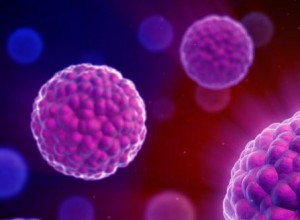Good cholesterol reduces spread of cancer cells
Thursday, May 22nd, 2014 4:44:26 by Khalil Khan
Bad cholesterol is a well-known risk factor for stroke and other vascular diseases. But an international team led by Carlos Enrich, University of Barcelona, pointing it now also as a likely responsible for metastasis, replicas of a tumor in other organs that often kill the cancer patients. In cellular models of human cancer, the scientists show that bad cholesterol (LDL, or low density lipoprotein) stimulates cancer cells to move and spread. Conversely, the good cholesterol (HDL, or high density lipoprotein) is opposed to the same molecular mechanisms. The work suggests a new strategy against metastasis, the true executioner of people with cancer.
“Metastasis is one of the big issues that make cancer so difficult to treat,” Enrich says, “and researchers have long recognized that a better understanding of the spread of cancer can give us the opportunity to improve the treatment of cancer “. Enrich has led a team of the Department of Cell Biology, University of Barcelona and other institutes of the same city, along with the universities of Sydney, Brisbane and New South Wales in Australia, Athens and Hamburg. The 22 researchers work published in Cell Reports.
The human body cells bind to their neighbors by proteins called integrins its membrane. “They work as a velcro,” explains Enrich. The various configurations of the velcro, however, are also implicated in the spread of cancer cells from the original tumor to other neighboring tissue, or other remote organs through blood or lymphatic system (hence the common interest of the doctors examine lymph nodes). Integrins play an essential role in the ability of these traveling cells to adhere to and invade new organs.
And right there is where cholesterol is involved: in intracellular trafficking that determines which integrins and many are integrated into the membrane of the cancer cell. ” What interested us is that cholesterol, a major fats in our body, is revealed as necessary to maintain integrins on the surface of cancer cells,” explains Enrich about the genesis of his work. “But until now no one knew where he came from that cholesterol, or how he could be manipulated to aid in the treatment of cancer.” This is what explains the new research.
Cholesterol is insoluble in blood, and any grease is insoluble in water. To travel through the blood has to join protein complexes, forming lipoproteins (fats bound to proteins), which come in two models: the low-density (LDL) carry newly synthesized in the liver to other organs cholesterol; the high-density (HDL) remove excessive cholesterol from these bodies and returned to the liver. Ideally the liver and thus learns that leaves plenty of synthesizing cholesterol, or even starts to degrade.
The terms bad (LDL) and good (HDL) was coined in the context of cardiovascular disease, because LDL is the primary source for cholesterol deposits ranging sealing sclerotic arteries. The HDL cholesterol not only serve to prevent these deposits, but was withdrawn from them in certain conditions.
But now, oddly, the terms good and bad can be extended to completely different field of tumor metastasis. Also there, indicating research Enrich and his team, the bad cholesterol (LDL) stimulates the invasive ability of cancer cells, while the good (HDL) reduces it. It seems that, in this case at least it’s good, it’s everywhere.
Short URL: https://www.newspakistan.pk/?p=44308

















